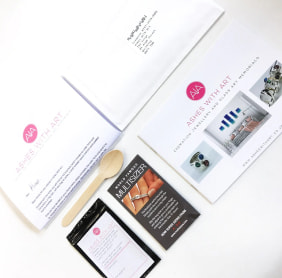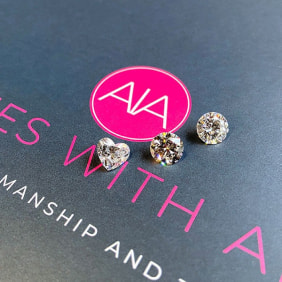Memory Box Keepsake Ideas for Bereavement
Losing a loved one is incredibly traumatic. As you learn to adjust to your new life without this person, you might find that being reminded of the person is incredibly painful. While getting rid of reminders might help you to move on in the short term, it could be a short-sighted solution. While you might find those memories painful when your grief is fresh, there might come a time when memories are incredibly comforting.
This is where the idea for a memory box comes from. Building a memory box can help anyone to cope with their grief. It allows you to indulge in remembering the person, giving you space to grieve and reflect. But when you are done, it encourages you to put the box away and focus on rebuilding your life.
Finding a way to compartmentalise your grief is a popular coping strategy. It will allow you to focus on building a routine that enables you to move forward rather than staying stuck in the stages of grief. Building a memory box is a highly effective way to achieve this.
What is a memory box?
A memory box is exactly as it sounds. It could be a small shoebox or even a whole room filled with memories of your loved one. Building the box is therapeutic, as it allows you to indulge your grief and feel all of the emotions. When you’re done building the box, you can then return to it and relive your memories. What is painful one day might bring a great deal of comfort in the months and years ahead.
Who can benefit from a memory box?
Anyone dealing with grief and the grieving process can benefit from a memory box. Children and adults will find comfort in the process of choosing what goes into the box and then creating a lasting memorial for their loved one.

What should I put in a memory box?
What goes into a memory box is highly personal. It often depends on the size of the box. If you are working with a small shoebox, you might be more selective than if you are setting aside an entire room in your home for memories of your loved one. Here are a few suggestions for what you can add to a memory box.
- Cremation ashes keepsake. A cremation ashes keepsake is a small item that contains ashes. These come in many different formats. You might choose a small silver token or a glass pebble. If you are scatting the ashes, keeping a small amount for a memorial keepsake token can help you to feel like the spirit of your loved one is still with you. Children also find a great deal of comfort from ashes keepsakes as they are very tactile and can bring comfort in times of need.
- Photographs. Perhaps the most obvious thing to add to a memory box would be photographs of your loved one. You might want to leave them loose or add them to a photo album. Adding photos to the box can help you to process your grief if you struggle to look at photos around your home.
- Clothing. Small items of clothing can bring a lot of reassurance, particularly if the item was recently worn. A t-shirt or hat would be the ideal thing to add to your memory box. Fabric items are perfect as they are very tactile.
- Perfume, aftershave or lotion. Smells can be incredibly powerful and transport you back to a place or time. Adding your loved one’s favourite aftershave, perfume or other fragrant items to the box can be incredibly powerful. The entire box will eventually smile like the fragrance, so you will be greeted with this every time you open it.
- Tickets and other mementoes. Adding items to the box that will help you to remember trips you took together can be very comforting. This will help you to take a trip down memory lane when you need it the most. Film ticket stubs, concert tickets, airline tickets, ferry tickets and more can all help you to cling on to those precious memories of a life spent together.
- Stuffed toys. If you are grieving the loss of a child or young person, you might want to include their favourite stuffed toy in the memory box.
- Handprints and plaster casts. Whether you are grieving the loss of an adult, child or animal, a hand/paw print or a plaster cast can be incredibly comforting.
- Music. Adding a CD, record or even a mixtape with their favourite music can add an extra sensory element to your memory box. Music can help to unlock memories, long after we have lost someone. Even those suffering from memory loss can find that music helps to connect them to their past.
- Recorded messages. Your loved one might have left a recorded message for you, or you might have saved their final voicemail message. Adding these recordings to a USB and including them in your memory box is a great way to document their voice. Hearing their voice after a long time apart can be incredibly emotional.
- Jewellery. If the person is cremated, you will likely keep their jewellery. You probably won’t want to wear this all of the time, so keeping it safe in the memory box is a great idea. In the early stages of grief, you might not be ready to see this jewellery every day, but as time goes by you might find that it brings more comfort.
- Books. Your loved one might have had a favourite book that is worn out from reading so often. This would be an ideal addition to the memory box. Perhaps they added notes in the margins that will one day help you to understand their perspective and view of the world, or simply bring some much-needed comfort.
- Poems and scripture. When we are dealing with grief, we often turn to religious texts and poetry to find perspective and reassurance. Adding prints of your favourite passages and poems will likely bring a lot of comfort in the future.

What to leave out of a memory box
While there aren’t really any rules about what can go in a memory box, there are a few things that you should certainly leave out. These are things that run the risk of damaging other items in the box, so they’re best stored separately or left out entirely.
- Food items. You don’t know how often you’re going to want to return to your memory box, and you don’t want to be greeted with a mouldy mess when you finally open it again. Food items can spoil and then damage other items in the box. They can also attract ants and mice, which might cause damage to precious items in your memory box.
- Liquids and drinks. If you’re going to include any liquids, make sure they are properly sealed and won’t cause damage to other items in the box.
Originals that aren’t backed up elsewhere. If possible, try to digitise the contents of your memory box and back it up in the cloud. This will eliminate the risk that you could lose the contents forever if there is a fire, flood or break-in.





